Antelope is the name of a large group of animals that have hoofs and hollow horns. They belong to the same animal family as goats and oxen. But antelope more closely resemble deer because most of them are slender and graceful. Antelope, like cattle, are ruminants (see Ruminant ).
Antelope keep their horns as long as they live. Among many kinds of antelope, both the males and the females have horns. The horns of the males usually grow larger. Some antelope have short, straight horns. The horns of others are long and curved, sometimes in a spiral twist. Some antelope horns are smooth, while others have ring-shaped ridges along their length. Antelope horns form around a single bony core. The horns are never forked like tree branches, as are deer antlers.
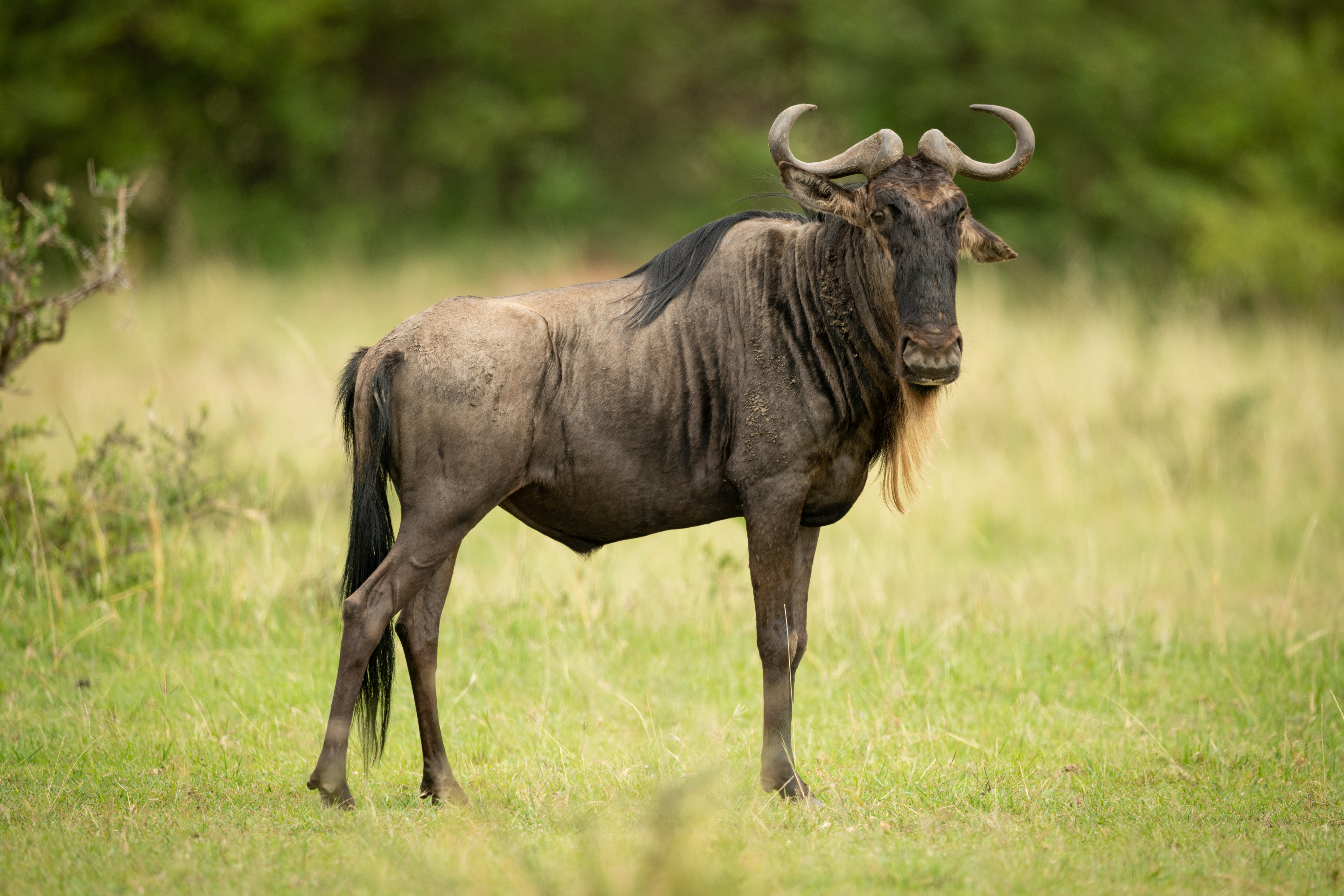
Most antelope live in Africa, but a few species (kinds) are found in Asia. The North American pronghorn is not a true antelope, though it resembles antelope (see Pronghorn ). Some antelope, such as the duiker and the bongo, live in forests. Others live on mountainsides and desert plateaus. A few, such as the sitatunga and the lechwe of central Africa, live in marshes. However, more kinds and greater numbers of antelope live on the dry or grassy plains of eastern and southern Africa than anywhere else.
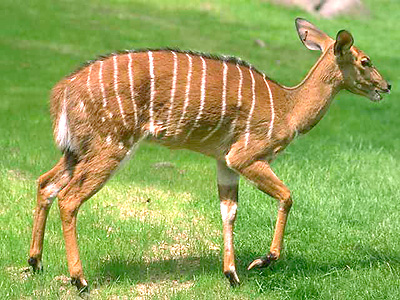
Some Africans hunt antelope for food. Game ranches also raise many kinds of antelope for meat. Antelope make good meat animals in tropical areas, because herds of several species feed on more kinds of tropical plants than do cattle or sheep. In addition, antelope have better resistance to tropical diseases.
Habits and appearance.
Most antelope are timid and run away from their enemies. The gazelle and the blackbuck are among the fastest runners in the world. A few antelope defend themselves when they must. They are the wildebeest or gnu, the roan antelope, and the sable antelope, all found in Africa. Sometimes other animals warn antelope of danger.
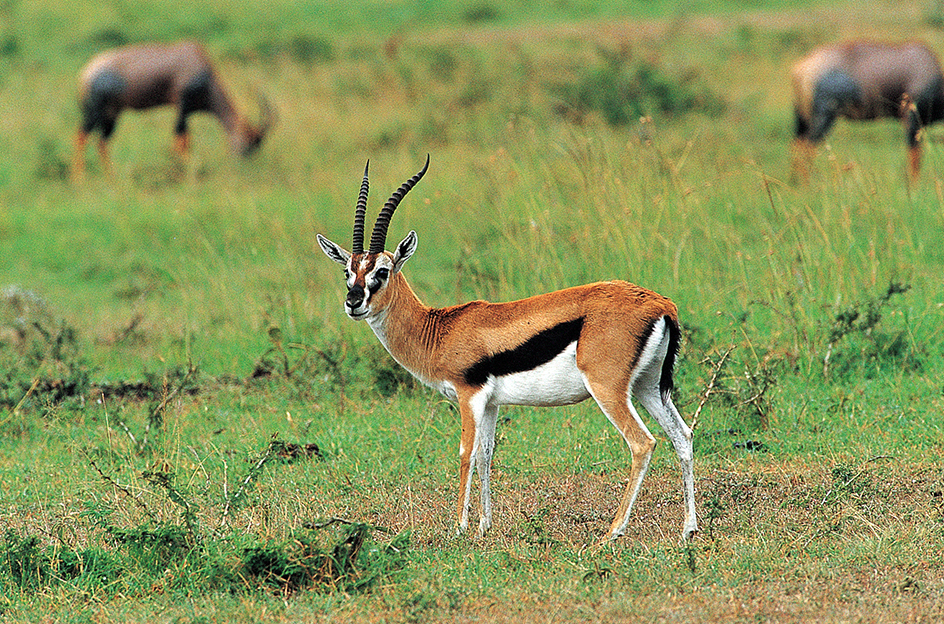

Most species of antelope are territorial. The male defends a territory (area of land) during the breeding season so that other males may not enter it. The females visit the territories and mate with the males of their choice.
Antelope vary in size. Some, such as the dik-dik and the steenbok, are not much larger than jack rabbits. Others, notably the eland, grow about the size of an ox.
A smooth coat of hair covers the skin of most antelope, except a few, such as the shaggy-haired waterbuck. This coat may appear in various shades and patterns. Brown and gray are the most common colors.
Kinds of antelope.
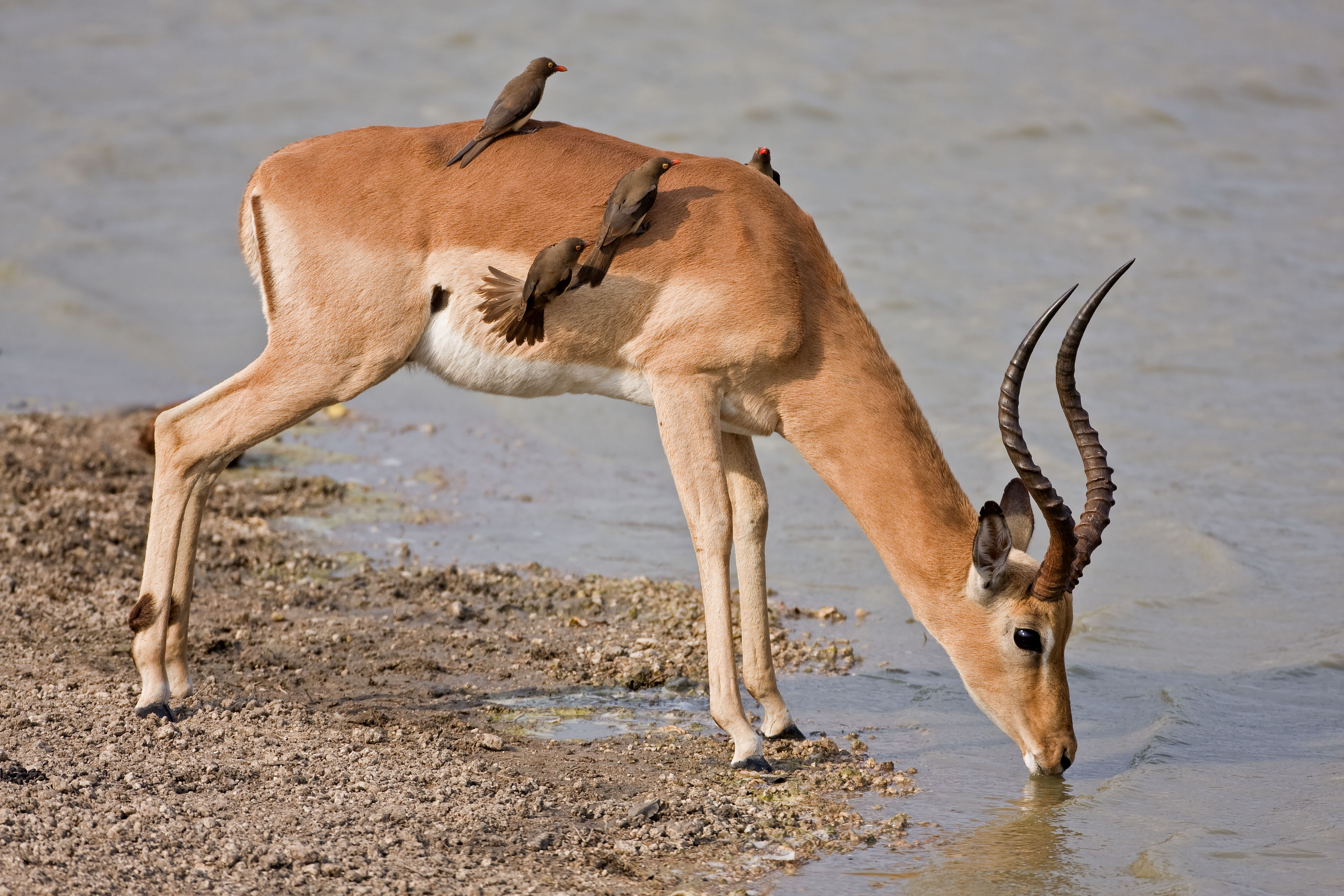

The klipspringer, a small antelope that resembles the European chamois, lives in rocky places from southern Africa north to the Sahara. This animal walks on the tips of its narrow, round hoofs, which give it sure footing.
A large bluish-gray antelope of India is called the nilgai. The male has short horns and long hair under its chin. Several large African antelope, including the gemsbok, are named oryx. Both the males and females have long horns that are nearly straight.
The roan antelope is a large, light-colored animal that lives from South Africa north to Ethiopia and Gambia. The sable antelope, related to the roan but slightly smaller, lives in southern Africa. It has large curved horns and a coat of black or rich brown with white underparts. Two kinds of antelope of the southern half of Africa are called waterbuck. The defassa waterbuck may be trained as a pet, when it is caught young.
Antelope and people.
People have long hunted antelope both for sport and for their meat and skins. In much of Africa, people still hunt antelope for food. Game ranches also raise many kinds of antelope for meat. Antelope make good meat animals in tropical areas because herds of several species feed on more kinds of tropical plants than do cattle or sheep. In addition, antelope have better resistance to tropical diseases.
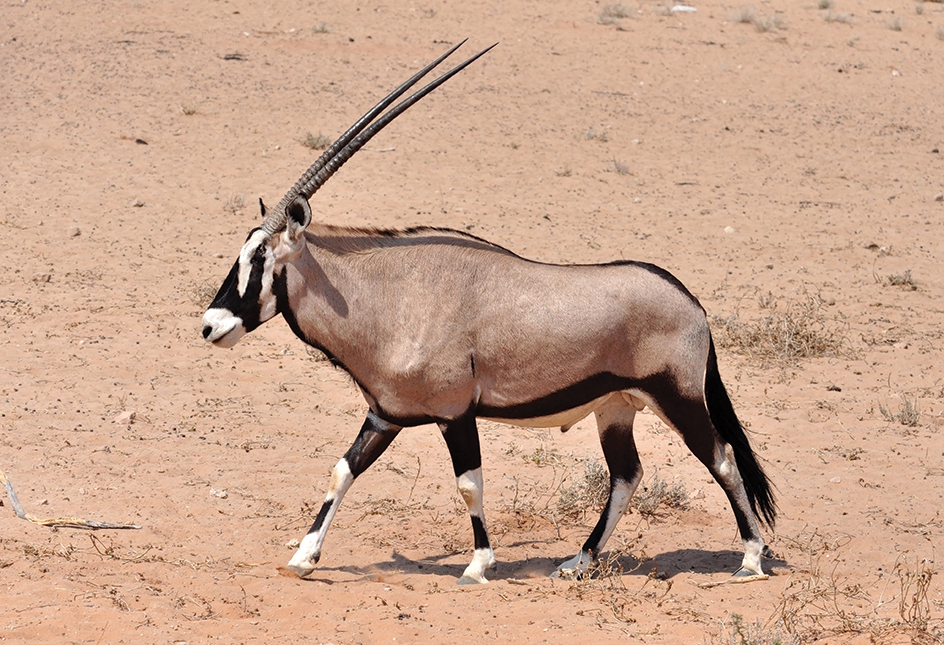

Unregulated hunting, habitat loss, and shooting of antelope by settlers have reduced the numbers of some wild antelope species. Many of the kinds of antelope considered most handsome, such as the bontebok, the giant sable antelope, and the white oryx, have become scarce.
